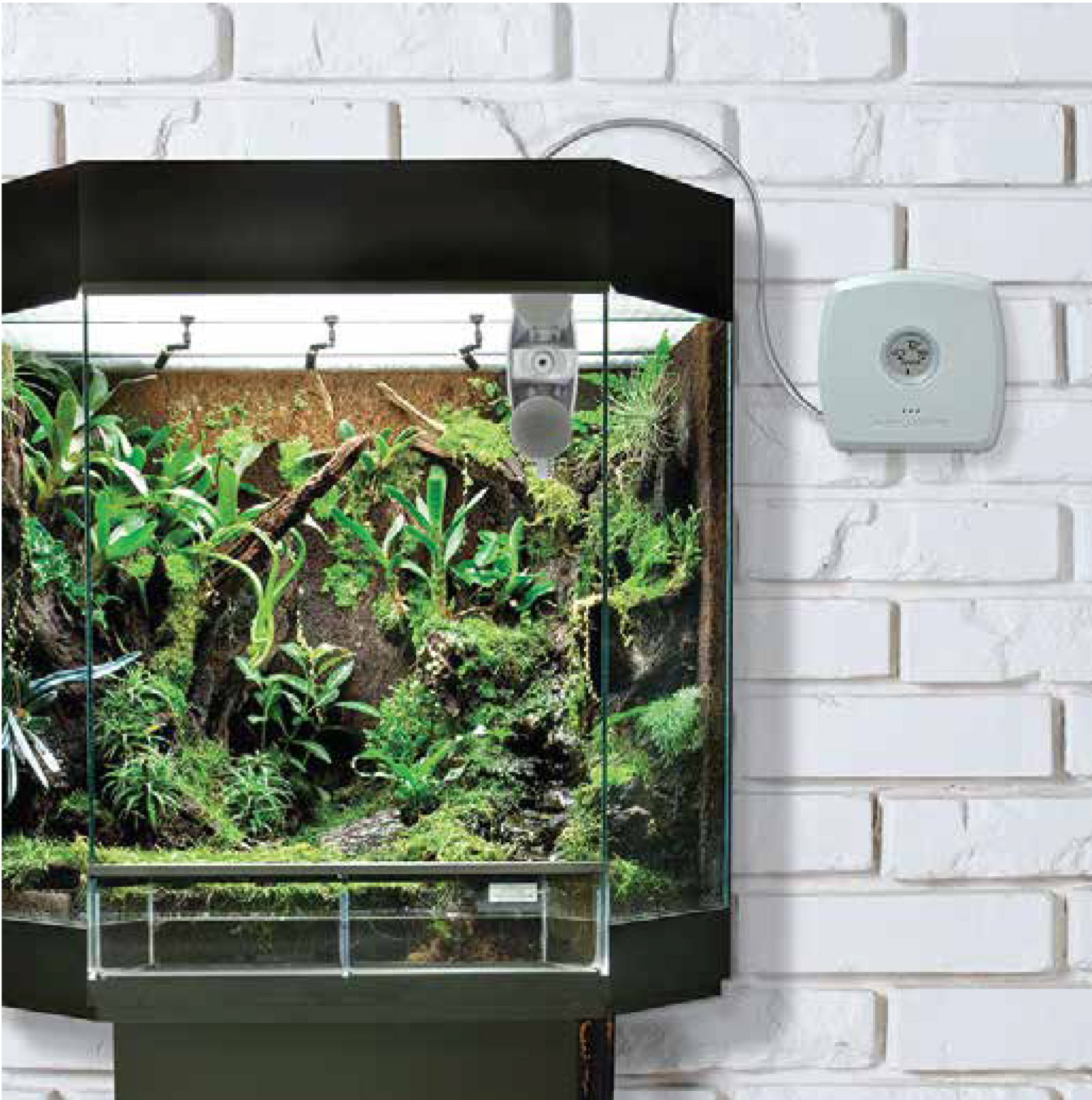Monitoring Safe conditions for Reptiles and Amphibians
Monitoring Safe Conditions for Pets
If you want your pets to be happy and healthy, it’s important to maintain proper environmental conditions and know the safe temperature for pets. Whether we’re talking about dogs, cats, fish, birds, reptiles, small mammals or even horses, the wrong conditions can lead to illness, poor general health…or even worse. Depending on the animal, it may be highly sensitive to temperature and even humidity. And if your pet lives primarily outdoors, it’s crucial to keep a close eye on weather conditions to make sure they are safe. Your best bet is to educate yourself on the specific environmental conditions your pets require, and then closely monitor those conditions with your own pet monitoring equipment.
Safe Conditions for Reptiles and Amphibians
Problem
Depending on the species, reptiles and amphibians may be sensitive to factors such as UV and UVB light, photoperiod, water pH (for semi-aquatic species), and of course temperature and humidity. One characteristic of reptiles is that they are "cold-blooded", meaning they cannot control their body temperature. Reptile temperatures are usually close to the climate temperature in the environment around them.
Solution
Verify if your pet is a tropical or temperate species. Then fully research the environmental requirements of that species and maintain them. Some species will require conditions outside of those considered normal for most reptiles and/or amphibians, so don’t go for one size fits all recommendations. It is critical to research factors for your particular species, including ball python temperature, ball python care, turtle care, iguana care, bearded dragon care, etc. Make sure to perform your due diligence learning about your pet's care requirements, as sickness or even death can occur when a habitat is not set up or maintained correctly.
Reptile Care Tips: The recommended conditions listed below are guidelines for keeping your pet safe. ALWAYS check with your veterinarian for specific temperature and humidity settings for your pet. Learn how the Land Hermit Crab Owners Society uses AcuRite sensors to keep their hermit crabs safe.

- Safe Ball Python Care: Safe humidity conditions for ball pythons are between 50-60% relative humidity. Safe temperatures for ball pythons are between 78-80 degrees Fahrenheit (26-27 degrees Celsius). Ambient temperatures should never fall below 75 degrees Fahrenheit (24 degrees Celsius). Ball Pythons also require a basking area, which should be kept at 88-96 degrees Fahrenheit (31-36 degrees Celsius).
- Safe Bearded Dragon Care: Safe humidity conditions for bearded dragons are between 20-35% relative humidity. Safe temperatures for bearded dragons are between 75-85 degrees Fahrenheit (24-29 degrees Celsius) during the day and 65-75 degrees Fahrenheit (18-24 degrees Celsius) at night. Bearded dragons also require a basking area, which should be kept between 90-115 degrees Fahrenheit (32-46 degrees Celsius).
- Safe Iguana Care: Safe humidity conditions for iguanas are between 65-75% relative humidity. Safe temperature conditions for iguanas are between 85-95 degrees Fahrenheit (29-35 degrees Celsius) during the day. Nighttime temperature should never drop below 75 degrees Fahrenheit (24 degrees Celsius). As with many reptiles, Iguanas like having a basking area, which typically can be kept as high as 120 degrees Fahrenheit (49 degrees Celsius).
- Safe Leopard Gecko Care: Safe humidity conditions for leopard geckos are between 20-35% relative humidity. Safe leopard gecko temperature should be 75-85 degrees Fahrenheit (24-29 degrees Celsius) during the day and 65-75 degrees Fahrenheit (18-24 degrees Celsius) at night. Leopard geckos also require a basking area, which should be kept between 90-115 degrees Fahrenheit (32-46 degrees Celsius)
- Safe Turtle Care: Safe temperatures for turtles are generally between 75-85 degrees Fahrenheit (24-28 degrees Celsius) generally during the daytime. Nighttime temperature should be kept between 70-75°F (21-24 degrees Celsius), while a basking temperature of 95-100 degrees Fahrenheit (35-38 degrees Celsius) is recommended. IMPORTANT: Turtle species from different geographic regions have different needs in terms of humidity, and may also vary with regard to temperature. Fully research your specific pet’s needs before setting up a habitat. In Charleston, South Carolina the Turtle Survival Alliance monitors the temperature in turtle enclosures using AcuRite spotcheck sensors and refrigerator temperature and humidity sensors to keep the turtles comfortable and safe.
- Safe Tortoise Care: Recommendations for tortoises are slightly different than their turtle counterparts. Generally, safe temperatures for tortoises are between 70-85 degrees Fahrenheit (21-29 degrees Celsius) during the daytime. Nighttime temperature should be kept between 60-70 degrees Fahrenheit (16-21 degrees Celsius), while a basking temperature of 95-100 degrees Fahrenheit (35-38°C) is recommended. IMPORTANT: Certain tortoise species (such as the Red Footed Tortoise) may require humid conditions while others (such as the Greek and Russian Tortoises) require an arid environment. Fully research your specific pet’s needs before setting up a habitat. In Charleston, South Carolina the Turtle Survival Alliance monitors the temperature in turtle enclosures using AcuRite spotcheck sensors and refrigerator temperature and humidity sensors to keep the turtles comfortable and safe.
AcuRite Reptile Thermostat:
- Montitor Temperature and Humidity Conditions with a Reptile Thermostat
- Position an AcuRite Room Monitor near the terrarium, tank or cage to track ambient air temperature and humidity.
- Use a Monitor with a wired Spot Check Sensor positioned inside the enclosure to view air temperature / humidity, and also conditions on a heat rock or your pet's favorite spot.
- Use a Home Environment Display for convenient viewing of conditions measured by multiple Monitors and Sensors in and around your home.
- Set alarms on the display to alert you of hazardous conditions. These can include dangerously low or high air temperature, humidity, or water temperature.
Learn More About Safe Pet Habitats
There are many great resources on maintaining a healthy pet habitat. Here are a few examples:
- Petco offers series of guidelines for setting up a habitat for a variety of pets:
- PetSmart offers a resource page, organized by species, which includes information on terrariums, nutrition and more:
- The Humane Society offers these guidelines on building a shelter for outdoor cats:






